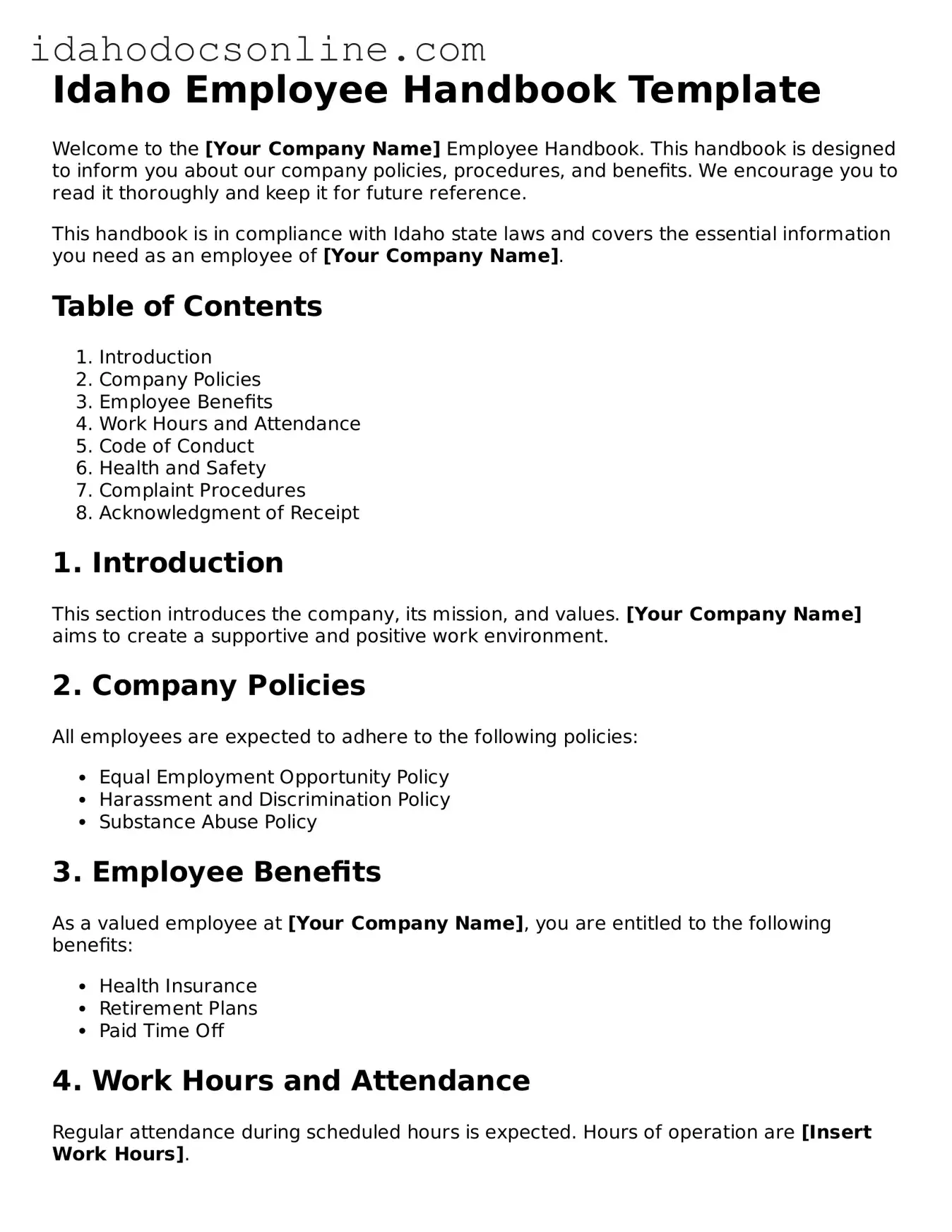Idaho Employee Handbook Template
Welcome to the [Your Company Name] Employee Handbook. This handbook is designed to inform you about our company policies, procedures, and benefits. We encourage you to read it thoroughly and keep it for future reference.
This handbook is in compliance with Idaho state laws and covers the essential information you need as an employee of [Your Company Name].
Table of Contents
- Introduction
- Company Policies
- Employee Benefits
- Work Hours and Attendance
- Code of Conduct
- Health and Safety
- Complaint Procedures
- Acknowledgment of Receipt
1. Introduction
This section introduces the company, its mission, and values. [Your Company Name] aims to create a supportive and positive work environment.
2. Company Policies
All employees are expected to adhere to the following policies:
- Equal Employment Opportunity Policy
- Harassment and Discrimination Policy
- Substance Abuse Policy
3. Employee Benefits
As a valued employee at [Your Company Name], you are entitled to the following benefits:
- Health Insurance
- Retirement Plans
- Paid Time Off
4. Work Hours and Attendance
Regular attendance during scheduled hours is expected. Hours of operation are [Insert Work Hours].
5. Code of Conduct
Employees must conduct themselves in a professional manner while representing the company. Key expectations include:
- Respect for colleagues and clients
- Integrity and honesty in all interactions
- Compliance with all applicable laws
6. Health and Safety
Your health and safety are priorities at [Your Company Name]. Employees are required to report any unsafe conditions or incidents immediately.
7. Complaint Procedures
If you have a complaint, please follow these steps:
- Discuss the issue with your immediate supervisor.
- If unresolved, escalate to HR.
- Written complaints can be submitted for serious matters.
8. Acknowledgment of Receipt
By signing below, you acknowledge receipt of this Employee Handbook and agree to comply with its contents.
Employee Name: [Employee's Name]
Employee Signature: [Signature]
Date: [Date]
